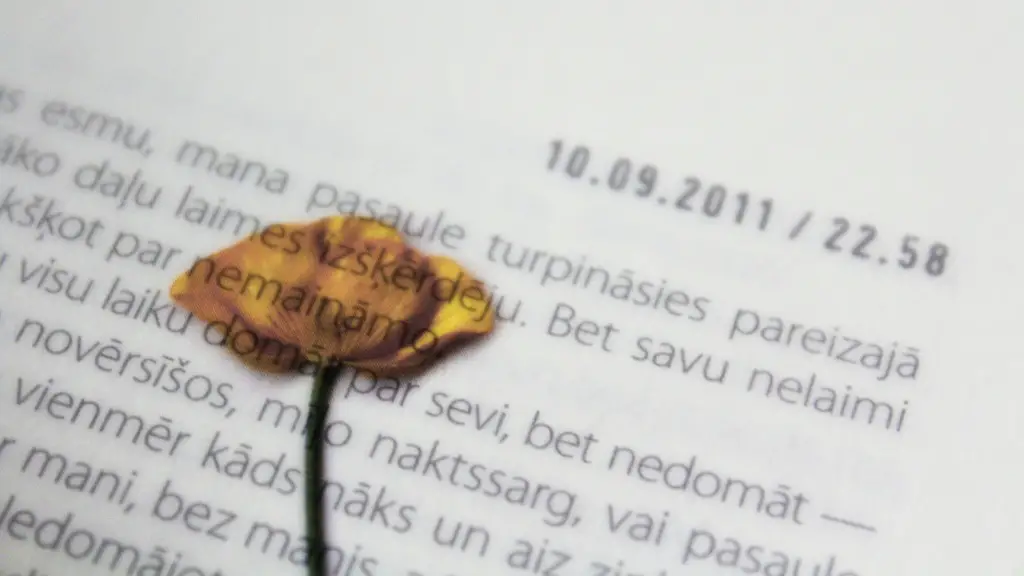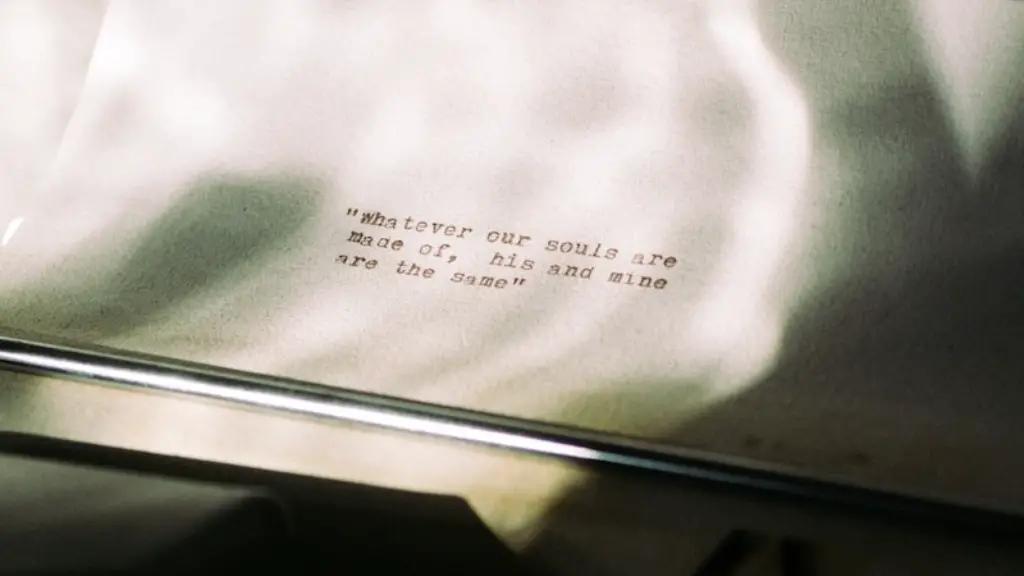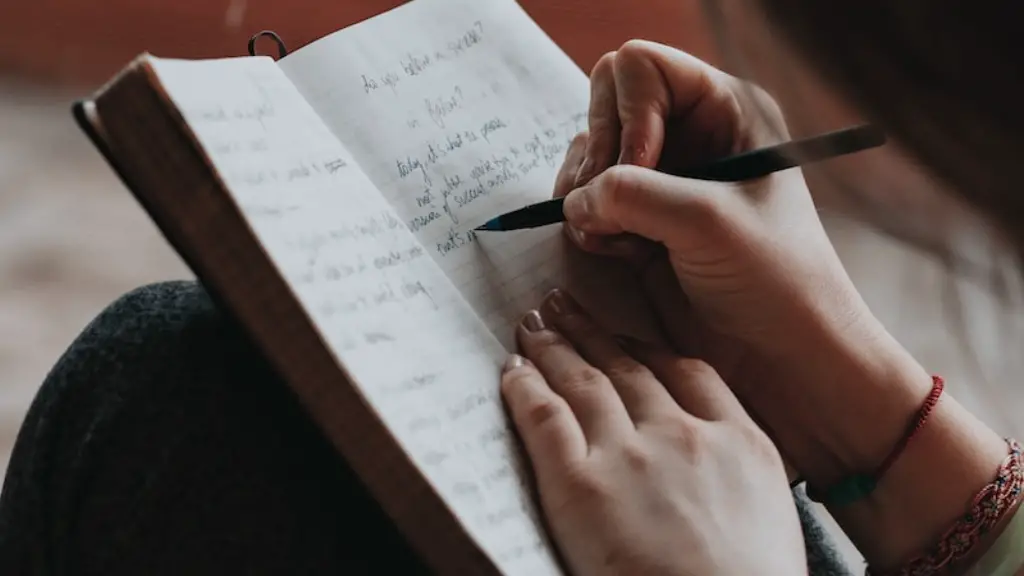Main Topic – What is Meant By Poetry in Motion?
When it comes to discussing poetry in motion, many people are left scratching their heads wondering what the phrase itself actually means. Does it entail merely physical movement? Is it metaphorically related to speaking? Or perhaps can the concept only be attributed to dance or literature? In order to answer these questions, it is pertinent to consider each definition individually, and explore the underlying implications of each definition.
At its most basic level, the concept of poetry in motion refers to a physical movement or gesture symbolizing an aesthetic concept that is packed with emotion and self-expression. This can refer to anything from dance as a form of art, to sports involving teams of people collaborating towards a common goal. This includes the perfect touchdown, the power packed slam dunk, and the graceful turns of a figure skater. The beauty of physical poetry in motion is the ability to translate an internal emotion into a structured movement which the world can witness and admire.
Alternatively, poetry in motion can exist when it comes to speaking. This is why legendary orators like Martin Luther King Jr. or Nelson Mandela make such poignant speeches that go down in history. They are able to so accurately enunciate their ideas, feeling, and beliefs that it almost feels as if it was a poetic symphony of soaring emotions being played out in front of an audience. It is no wonder that we revere such figures for their eloquence and multitude of words.
But in a more creative sense, there is no doubt that poetry in motion exists in the world of literature and prose. When written words can communicate to their readers a story of sorrow and hope, there is a poetic spark that starts to shine through each syllable that is read. It is perhaps this tangible connection which draws us to our favorite authors, poets, and playwrights. They give us a ray of light that helps us make sense of a confusing world.
Thus, when we look at the phrase ‘poetry in motion’ we should recognize that while there is an obvious literal interpretation to it – such as movement – there are also more metaphorical implications that can be attributed to it. We do not have to merely stay in the realm of physicality, but we can use these words to describe the poetically inclined speeches, literature, and captivating performances culminating in an unforgettable experience.
Poetry in Motion: Ancient Roots
The concept of poetry in motion can be traced as far back as Ancient Greece and Rome, as works such as Homer’s Iliad and Virgil’s Aeneid presented some of the first pieces of literature that embodied poetic beauty and form. These heroic epics and poems can be seen to have laid the foundation for aesthetic poetry in motion, as the works themselves carry a sense of internal emotion, intent, and passion that carried through generations and still influences modern literature and expression.
In Ancient Greece, physical poetry in motion was seen through their theatrical performances, which were infused with poetic passages, developed stories, and memorable characters, as well as with athletic events and competitions. The ancient Olympic Games were a celebration of physical prowess and intended to honor the gods and goddesses. The winners of each event were crowned with a wreath and called Olympiarchs, and these seemingly simple yet memorable gestures remain firm in the memory.
The overall focus of Ancient Greek art and literature was the idea of beauty, and the pursuit of aesthetic excellence. Indeed, this obsession with beauty remains embedded in our modern culture today, as a highly prized and sought after quality.
In the political life of Ancient Rome, the concept of an eloquent speaker and passionate orator was highly valued, and these speeches and rhetoric stood as an ornamental poem of sorts. Cicero was an iconic character of this time, as he was able to sway people with his beautiful likeness of words, and was respected among citizens and statesmen alike.
Thus, we can see that the concept of ‘poetry in motion’ has been deeply rooted in the rich ancient history of both Greece and Rome, and its relevance is still evident in modern times.
Poetry in Motion: A Sense of Self
Whatever the medium of expression, whether it be in literature, through speech, or through physical movement, poetry in motion can be seen as an avenue of self-expression. It is an individual’s way of communicating with the world, their feelings, their emotions, and their intentions. It is their way of showing the world who they are.
Poetry in motion allows the individual a platform to express themselves and be heard, whether it be through an impassioned speech, a powerful slam dunk, or a piece of literature that subtly yet realigns the way a reader looks at the world. There is a certain respect and appreciation for the individual’s self-expression, which leads to a celebratory response from society.
The world of physical movement and sports is perhaps the most obvious example of this phenomenon, as a long jump full of energy and poise can galvanize the energy of an arena full of people. Additionally, sports can be an outlet of self-expression, as it allows players to embody characters and stories to their own personal narrative.
In written literature and in oration, poetry in motion can also help individuals convey an idea or story to a larger audience. The rhythm, tone, and emotion behind the words can leave a lasting impression on the listener and present an incredibly powerful tool for individuals to speak their truth and be heard.
So, poetry in motion is about providing a platform for individuals to express themselves, show their emotions, and tell the world who they are. In all its forms and definitions, it is an empowering concept that allows individuals to be seen.
Poetry in Motion: Poetic Inspiration
The concept of poetry in motion carries within it a great sense of inspiration and admiration. Indeed, looking towards the night sky, the light touches of a dancer, the energy of a slam dunk, and the force of a passionate orator are all captivating scenes that imprint themselves on our minds. It is this admiration that drives us to recreate and relive these inspiring moments and look towards them for inspiration in our own lives.
The beauty and magical power of poetry in motion is its ability to captivate audiences, linger in their minds, and help the individual re-discover themselves and come to terms with identity. It can serve as a passion for life, a form of expression for thoughts and feelings, and an understanding of the world and the issues that society currently faces.
The inspirational power of poetry in motion can be seen in all its forms, and as individuals we can look towards its influences when expressing our own emotions and in piecing together our own stories.
In essence, poetry in motion is a source of inspiration and empowerment. It can speak to the individual, offer a glimmer of hope and thought, and allow them to express their dreams and desires.
Poetry in Motion: Creative Expression
Ultimately, the phrase ‘poetry in motion’ can have an immense creative power, as it allows individuals to draw from a deep well of inspiration. Like a painter with a canvas, a poet with their words, or a musician with an instrument, individuals are able to express their unique voice and show the world their inner story.
And even in the most mundane of tasks, poetry in motion carries within it a sense of creative expression. During activities such as playing sports, physical labor, running, or even dancing around the house, the individual is still expressing a creative spark that can be looked towards with admiration and awe.
In sum, the phrase ‘poetry in motion’ carries a dual meaning, encompassing both its physical aspects as well as its metaphorical applications. It can refer to physical movement as a form of art, verbal expression through speeches, and written works as pieces of literature engaging the reader and inspiring them. We can see our ancient history through the lens of poetry in motion, recognize its importance in self-expression, and use it as a source of inspiration and creative expression.
Exploring Nature Through Poetry in Motion
Looking out into nature, there is no doubt that the phrase ‘poetry in motion’ often comes to mind. From the birds soaring through the sky and striking a rhythmic beat with their wings, to the lightning flashes of autumn leaves, nature can captivate us with its poetic imagery.
The sun dipping into the horizon at night, the trees swaying to a light breeze, and the animals that scuttle by, all possess a certain creative spark which inspires those looking upon them.
Nature itself can be its own form of poetry in motion, and exploring deeper, we can witness how its movements, colors, and sounds can captivate an audience with its poetic vibes and rhythms.
In its myriad forms and shapes, we can view nature love a beautiful poem brought to life, and in turn compose our own story of serenity and hope.
Advocating For Change With Poetry in Motion
What is even more admirable about the concept of poetry in motion is its ability to speak to a wider audience and on a higher level. Indeed, arguably one of the most potent uses of poetry in motion is its ability to be a catalyst for social change and a voice for those without one.
Brave individuals, who through their artistic expression, inspire and mobilize those around them in pursuit of justice and fairness, have long used the power of poetry in motion to rally individuals together, and fight inequality and oppressive systems.
Whether it be the women’s suffrage marches in the early twentieth century, the Egyptian protests in 2011, or the civil rights movement in the United States in the 1960s, people have long relied on the ‘poetry in motion’ as a conduit of protest and change, and it has proven to be incredibly effective in attaining the betterment of society.
Indeed, by uniting together in pursuit of a common goal, and putting into motion a shared artistic expression, it is possible to attain justice, equality, and a brighter future for all.





